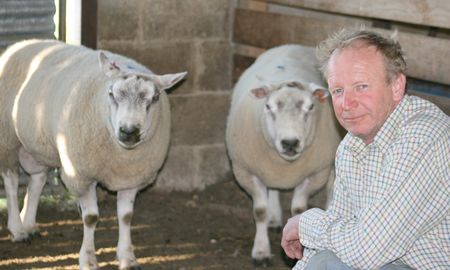Hard-to-spot bluetongue could have been missed
Bluetongue may be far more widespread than is currently thought, should the experience of one affected farmer be repeated across the UK.
Frank Langrish, of Beckley, near Rye in East Sussex, says the disease is difficult to spot in fit, healthy sheep and particularly hard to notice in beef animals. Affected animals seem to recover quickly, he adds.
“We’ve had two rams with classic bluetongue symptoms – slightly swollen heads, nasal discharge and a high temperature.
“But we’ve had other sheep on different holdings which I believe to be infected and these have shown much milder symptoms, simply looking a little hunched up and off-colour for a day and then recovering quickly. Even the rams are fit again and were happily chewing their cud a couple of days later. But everything we see is being treated with antibiotics to ward off any secondary infections.”
Blood-testing of all stock on the holding where the infected rams are kept found no more sheep with the disease nor antibodies to it, but five cattle out of 19 which were sero-positive for bluetongue and carrying antibodies against the disease. “This suggests they were infected some time ago and have recovered. But they haven’t shown any sign of infection at all and have maintained condition all summer,” he explains.
Mr Langrish believes many other farmers may have seen the disease earlier this summer and assumed it was something else. “We certainly saw some wether lambs with odd symptoms in the summer, but didn’t for a minute think it was bluetongue. They had a swelling of the pizzle which resulted in a blocked urethra. This, again, was difficult to spot and we lost about four out of 3000. Treatment with antibiotics saved a few.
However, while the disease may be tricky to diagnose, farmers must remain vigilant, warns NSA chief executive Peter Morris. “Anyone spotting any susceptible animal with possible symptoms or anything questionable should contact their vet.
“Thankfully, we’re seeing quite mild symptoms at the moment, but this mirrors what was seen on the Continent last year and the disease exploded there this spring. We have to ensure we know where the disease is this autumn, so we are prepared for what may happen next year.”
- Dealing with bluetongue – meetings organised by FW, NSA, NBA, EBLEX and LAA, p38

Bluetongue is proving hard to spot as it is presenting mild symptoms in sheep at the moment, says Frank Langrish. These two rams may look perfectly healthy now, but just a week ago they were struck down by the disease.
